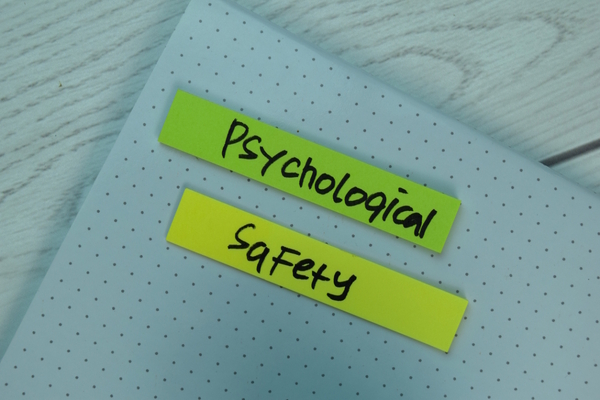Cleaning up your tech wasteland in 2024

Many companies were caught up in the AI hype and are not applying it effectively - especially in HR functions. Nicole Neumarker at WorkForce Software explains how they should be approaching this opportunity
As the architect of technology strategy, the CTO is constantly considering and adapting to new innovations, and 2023 has certainly been busy. The boom in generative AI (GenAI), such as ChatGPT, made AI ‘consumerable’. What was once an advanced and specialist concept for technical leaders, became a very real concept for consumers overnight. And not only could they use AI, but they could understand the power of it.
Despite these advancements, a surprising number of organisations still run their companies as if they were in the 1990s. Manual processes, spreadsheets, and legacy HR and payroll platforms are often the norm, with siloed data prone to error and liable to security breaches. It makes little sense for companies to continue operating with these manual systems that jeopardise user experience and restrict productivity.
If businesses want to be more competitive in 2024, and retain their staff in the process, they need to take this moment to upgrade their tech stacks, to capitalise on their data whilst meeting the needs of their current employees and customers.
Substance over hype in generative AI
The rise of ChatGPT has led some of the world’s biggest businesses to fixate on GenAI, putting it at the heart of their business operations and future IT investment plans. While GenAI has many business benefits, companies can get trapped in the hype and waste precious digital transformation budget if AI is not applied effectively, especially when it comes to HR functions. It rapidly becomes a wasteland of information when not assigned to a proper function where it can drive value.
In 2024, businesses need to clean up past tech investments, data and processes, to rethink their use cases. Instead of investing in chatbots and customer service, businesses should focus funds on managing information at scale. For HR teams, an impactful use of GenAI is as a knowledge facilitator for employees, helping them to streamline work and avoid wading through messy folders. This puts company data at employees’ fingertips, ensuring that organisational knowledge is easily stored and accessible when needed.
Don’t leave deskless workers behind
An area that is often forgotten in the move to new tech is the ‘deskless workforce’, with this group of workers being largely excluded from corporate technology investments. With 83% of the deskless workforce without even a corporate email address, integrating GenAI into tech stacks is not going to be top of their agenda. And with employee retention and attraction as a key challenge going into 2024, businesses need to ensure that each employee is a priority.
Instead of getting caught up in trending technology, businesses must ensure they ‘go back to basics’ and provide their people with the fundamentals that allow them to perform their jobs better and improve their employee experience in ways that matter most. These workers are seeking greater scheduling control, more flexibility, and greater input into operational decisions. For many employers, delivering on these demands will require greater investments in HR technology, which are more fundamental to business operations than GenAI alone.
The right people for the right job
In 2023, businesses battled over budgets for both focused and centralised IT functions. Looking forward, as infrastructure gets more complex, organisations will need more specialists. For instance, a pivotal role is the translator who sits between HR and IT. This requires someone who can speak both languages and decide where tech investments are best placed. DevOps is another area for attention. With margins more squeezed than ever, over-hiring is no longer an option — and this must be considered an opportunity to hire the right people rather than simply building up the numbers.
Ultimately, it’s about sourcing the right people for the right job. For instance, we need to ask who’s in charge of employee knowledge and productivity? This isn’t necessarily HR if we’re talking about the productivity of an R&D function. Including engineers in the process of selection of preferred GenAI tooling allows for higher productivity and ownership, enabling them to develop higher-quality code faster. HR needs to have technical analysts who can understand HR context and leverage technology and data in meaningful ways — or they’ll never get the value out of technology investments.
Machine Learning comes to the fore
Generally, HR metrics begin and end with turnover, demographics and hiring trends. However, organisations are missing out on the real power of people data by focusing on these traditional HR focus areas. Often with little access to operational data, teams can find it difficult to leverage the full value of their corporate data, which is often locked up in HR and operational systems.
For instance, does your company’s people and cost data flow into your operational and business data? Why not? And how do you think about labour from a data perspective? Is it just people and hours? Before enhancing forecasting and predictability, businesses need to have granular operational data that brings value and drives better decisions. From an HR perspective, this includes integration of new metrics such as productivity levels, and visibility and valuation of skills.
In 2024, businesses can use this data to actualise Machine Learning (ML) models and power rapid data analytics. Having access to all the company-wide data you need in one place fuels operational and natural language tools and makes it easier to validate results and train these forecasting models. Effective adoption of ML will become vital to move faster than competitors, understanding demand to build the right supply of talent — even uncovering insights that managers would never know existed.
Success in the year ahead is dependent on improvements in tech and talent. From the effective adoption of AI, GenAI, and ML to catering for deskless workers and finding the right employee for the right job, HR teams need to look to tech to help them derive value from their data to impact business results.
Nicole Neumarker is CTO at WorkForce Software
Main image courtesy of iStockPhoto.com

Business Reporter Team
You may also like
Most Viewed
Winston House, 3rd Floor, Units 306-309, 2-4 Dollis Park, London, N3 1HF
23-29 Hendon Lane, London, N3 1RT
020 8349 4363
© 2025, Lyonsdown Limited. Business Reporter® is a registered trademark of Lyonsdown Ltd. VAT registration number: 830519543





